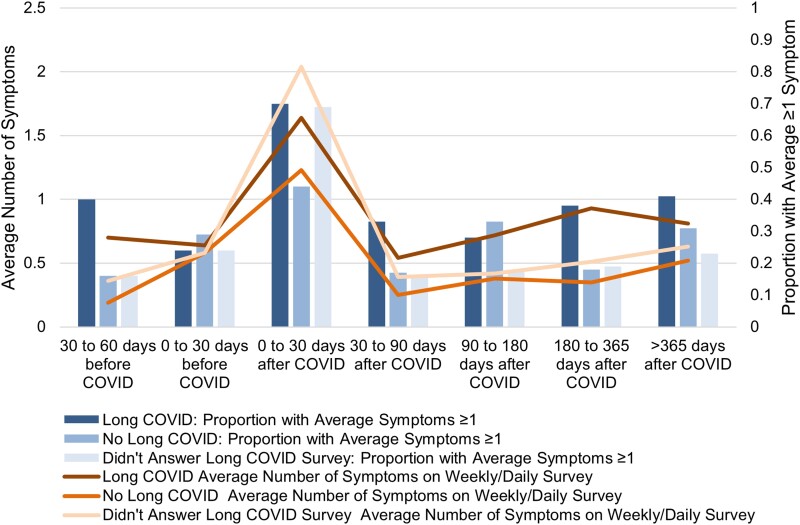Figure 2.
Average number of symptoms and proportion with symptoms on the weekly/daily surveys during each time period. We found higher proportions with symptoms and a higher number of symptoms reported among those with Long COVID. Of note, symptoms queried on the daily/weekly surveys included whether participants had 1 or more of the following: a scratchy throat, a painful sore throat, a cough, a runny nose, symptoms of fever or chills, a temperature >100.4°F or 38.0°C, muscle aches, nausea, vomiting, or diarrhea, shortness of breath, unable to taste or smell, and red or painful eyes. These symptoms are more typical during acute infection so some individuals with Long COVID did not have any of these symptoms but still reported Long COVID symptoms.

